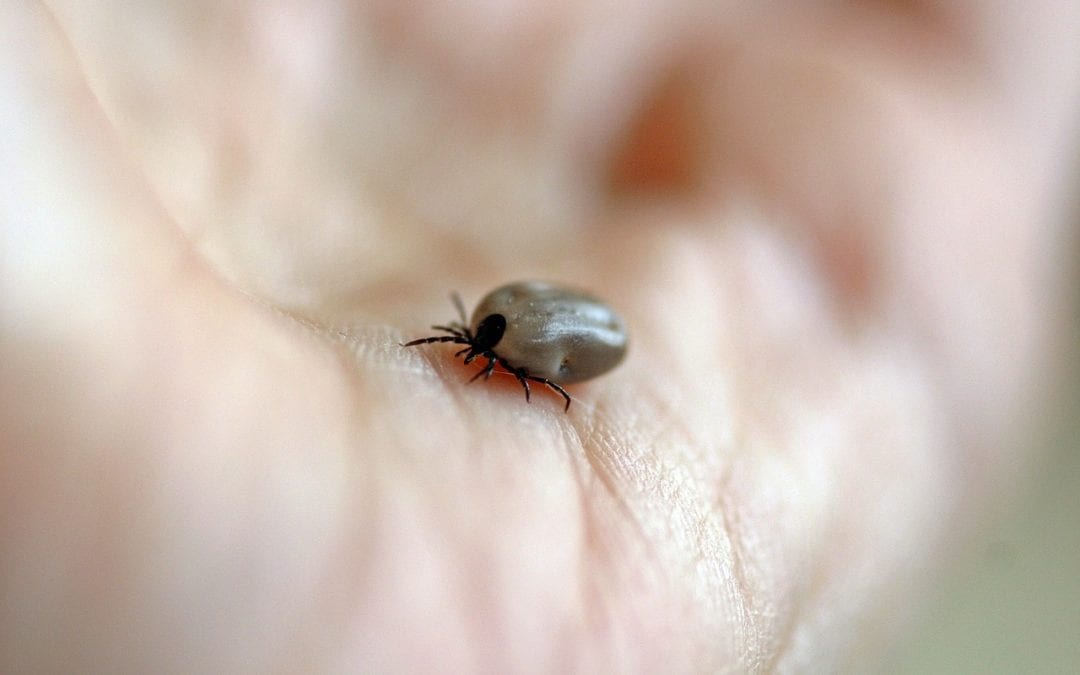There are a lot of differing opinions on the right way to remove a tick, especially those found on pets. From fingernail polish remover to matches, ye olde Internet is full of tips and tricks for tick removal, most of which are wrong. Many of these touted methods will actually harm your pet physically, and cause the tick to release toxins into your pet’s bloodstream, which may not have happened had you used the proper method.
No matter how hard you try to avoid ticks, sooner or later one is going to creep onto your pet. That is why the all-important first step in keeping your pet tick-free is the tick check. However, even the most diligent among us will find a tick eventually.
Finding Ticks
The best way to find a tick on your pet is by touch. By rubbing your hands along your pet’s body, you can find a tick by the bump on the skin (it often feels like a scab).
Make sure that you check everywhere for ticks on your pets, from the top of his or her head, to the tail, and everywhere in between and underneath. That means checking between their toes, under their armpits, in their ears, and any other spots where they could be hiding in dips in the skin. Don’t forget to check his or her groin area, too; ticks like warm, dark spots of the body.
Removing Ticks
Despite the misinformation you’ll find on the web, there is only one veterinarian-approved method for tick removal. There are a few supplies you’ll need, and we recommend that you keep them stocked at all times (at home, and in the car):
- Latex (or non-latex) gloves and a headlamp (these are for you)
- Small container with lid
- Rubbing alcohol
- Fine tipped tweezers
- Cotton swabs
Here’s what to do:
- Don your gloves and headlamp, and swab the affected area with rubbing alcohol.
- Grasp the tick between the tweezers as close to its head as possible (where the tick is entering the skin). Be sure to go at the tick straight-on, you don’t want any angles involved here.
- Pull the tick straight out of your pet. Keep the pressure steady and take caution not to twist the tweezers or tick. Straight out – that’s how you do it. You don’t want the tick’s head to break off while it’s still burrowed into your pet, as this can cause infection and other complications.
- Once the tick is out, immediately drown it in rubbing alcohol (in the small container). DO NOT try to kill the tick any other way. It won’t work. You might think you want to burn it, but don’t. The fumes from a burning tick are toxic (especially to young children and pets), and can cause illness, too.
- Once the tick(s) is contained, date the container and hold onto it for a few weeks. If any signs of tick-borne illness surface, we may want to test the tick.
Ticks can pose a serious threat to your pet’s health, as they carry a host of nasty illnesses, including Lyme disease and Rocky Mountain spotted fever. We recommend that you keep your pet on a year-round parasite preventative for his or her protection, but even if your pet is protected you need to remain vigilant against the risk that ticks pose.
If you have any questions or concerns about how to remove ticks, any concerns about tick-borne illnesses, or if you need to bring your pet current on his or her parasite preventative, please don’t hesitate to give us a call.

